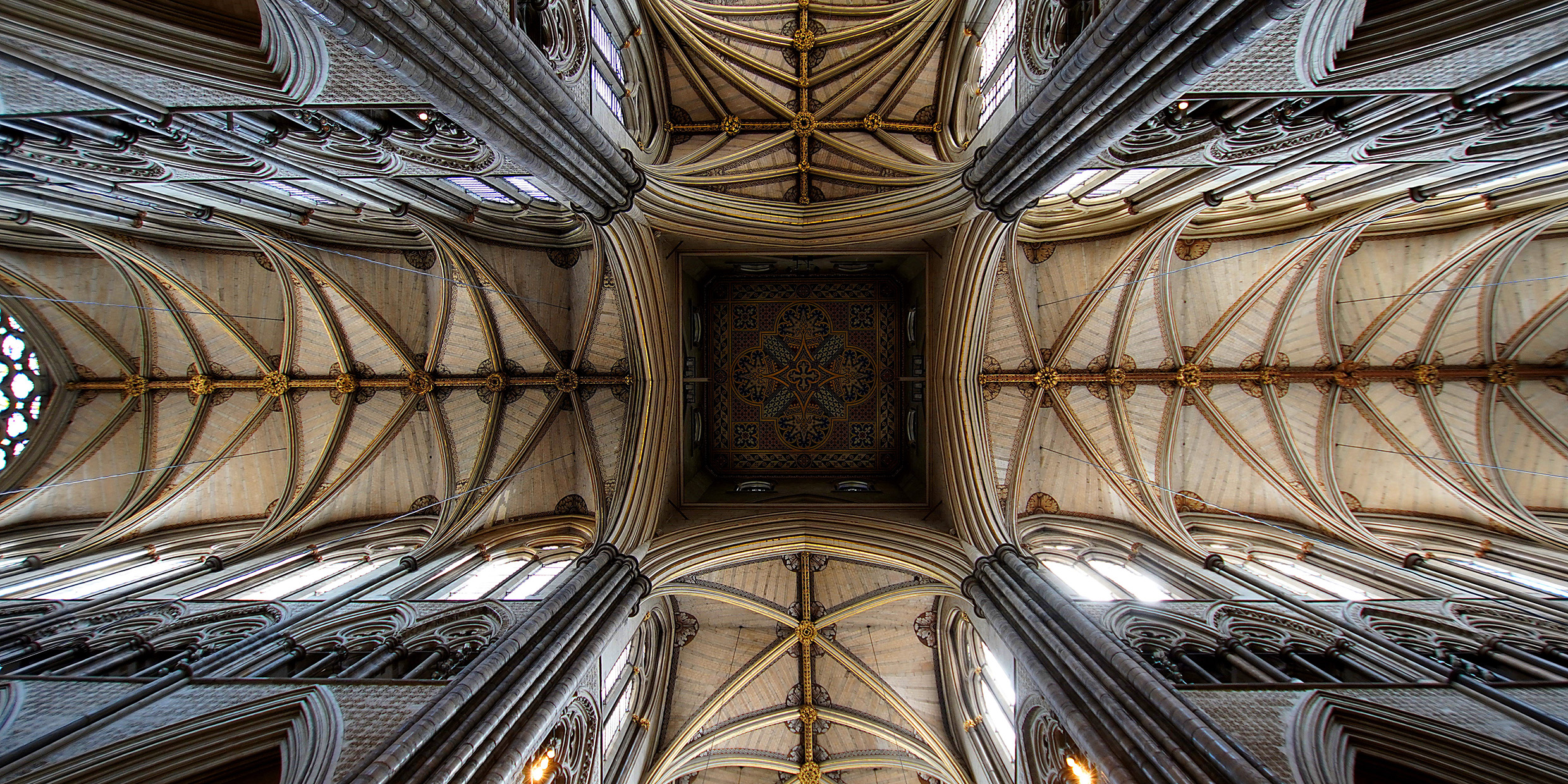Originally published 4 November 2003
LONDON — This was my third or fourth visit to Westminster Abbey, although the first in almost three decades. I stood in line to buy my ticket of admission with some misgivings. I remembered being disappointed on previous visits, but could not remember why.
Certainly, the Abbey is a magnificent work of architecture. The 14th-century nave rises on graceful flutes and columns more than 100 feet, making it the tallest Gothic structure in the British Isles. The fan vaulting in the 16th-century Lady Chapel is a thing of almost miraculous beauty and delicacy.
And, of course, the whole point of Gothic architecture was to direct the worshipper’s attention upwards to a realm of light and glory, away from the dismal squalor of the Earth. Make no mistake, life on Earth in the Middle Ages was no bed of roses. Even a slight knowledge of the violent, disease-ridden history of those times makes obvious why most folks cast a hopeful eye on something better.
The source of my disappointment on previous visits soon became obvious. To an extent unparalleled in any other medieval cathedral I have visited, Westminster Abbey has become a gaudy monument to posthumous vanity. The place is chock-a-block with outsized sculpted memorials and sarcophagi celebrating the lives and accomplishments of English men and women, some famous, some less so.
Sometimes it seems that the lesser the fame, the more assertive and intrusive is the monument.
The effect of this worldly clutter is to make it almost impossible to appreciate the architectural significance of the building itself, and the heavenly aspirations it was meant to evoke. Only in the screened-in Quire, at the center of the nave, can one fully appreciate the majesty of the original Gothic vision.
This may be one reason why so many tourists are drawn to the Poet’s Corner of the Abbey, where the likes of Chaucer, Shakespeare, and Dickens are either buried or memorialized. Their memorials are relatively modest, as they should be. Art is its own memorial.
Fewer visitors to the Abbey find what might be called the Scientist’s Corner, at a side of the nave near a corner of the Quire. There, the great Isaac Newton is interred within a sarcophagus as grand as any other in the Abbey, including a likeness of the great man himself looking pompously foolish in a Roman toga.
The lengthy Latin inscription begins, “Here lies Isaac Newton, Knight, who by a strength of mind almost divine, and mathematical principles peculiarly his own, explored the course and figures of the planets, the paths of comets, the tides of the sea, the dissimilarities in rays of light, and, what no other scholar has previously imagined, the properties of the colors thus produced.”
Excepting Newton’s apotheosis in gushing prose and marble, the tombs and memorials of other scientists are appropriately reticent. And what an assembly! Charles Lyell, the father of geology. Astronomers John and William Herschel. Physicists James Prescott Joule and George Stokes. The pioneer of antiseptic surgery, Joseph Lister.
And, of course, the greatest of them all, who lies beneath a dignified black stone inscribed with these words: “Charles Robert Darwin. Born 12 February 1809. Died 19 April 1882.”
Poor Darwin. He would perhaps be abashed to find himself in Westminster Abbey at all, so reclusive and retiring was he in life. And his doubts about traditional theology provide another incongruity to his final repose in this most eminent symbol of Anglican orthodoxy.
But in a sense, these scientists carried on the work of the architects and master craftsmen who built the Gothic churches. They, too, lifted our eyes away from the cares and woes of day-to-day existence and focused our attention on the light and glory of the cosmos.
“There is a grandeur in this view of life,” Darwin wrote of evolution, and in knitting the history of our species into the expansive space and time of the geologists and astronomers, he helped accomplish what the architects of Westminster Abbey sought in their own way to do — and which in these sacred precincts has been so effectively obscured by human vanity.



